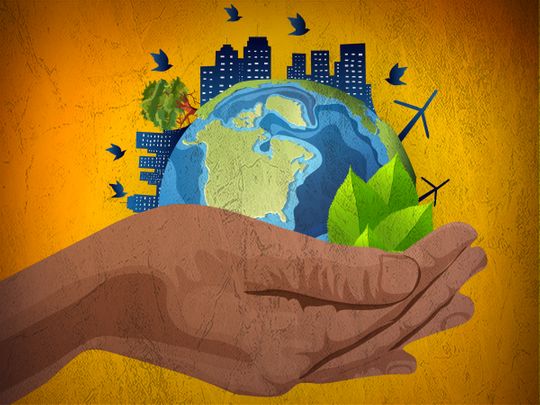
What we have witnessed over the past year should be an eye-opener to all those who still believe we have the luxury of time in the face of climate change. We have seen some of this decade’s worst climate disasters sweeping away belongings and lives and causing losses worth billions of dollars.
This year was a stark reminder that climate change is not on its way. It’s already here, picking up speed, and no country is immune to it. The IPCC report warns that unless greenhouse gas emissions are scaled back massively, it will not be possible to limit warming to 1.5 degrees Celsius by 2030.
Communities must band together to mitigate this threat. During Cop 26 everyone understood that real change starts with us - but so far we have seen plans, agreements, and many non-binding pledges. We spent enough time on planning and now we must implement and act stringent.
Far short of what is needed
It is obvious our efforts to mitigate climate change have fallen short. However, there are clear steps that can be taken to show progress. We must focus on what we can do now and address any bottlenecks that stand in the way of our decarbonization targets. The call for decisive actions to avoid climate catastrophe is louder than ever before.
We have already taken good steps by launching green hydrogen pilot projects here in the Middle East, such as the region’s first solar-driven hydrogen electrolysis facility with the Dubai Electricity and Water Authority (DEWA), demonstrating the potential of hydrogen commercialization as a carbon-free solution. In Chile, our Haru Oni project is the world’s first integrated plant to produce climate-neutral fuels.
We need to see more projects like these. That will take time - and since time is our scarcest resource - we need to adopt transitionary solutions that will support us in cutting emissions. Natural gas is one way to do that as generating electricity from natural gas cuts the CO2 emissions by two-thirds compared to coal.
Going green with hydrogen
The Middle East has a leading role to play in ensuring the security of affordable gas supplies to the world while also reducing its carbon cost by improving efficiency and cutting emissions. The technologies used for that industry could then be leveraged for the green hydrogen industry when it is ready.
Renewable energy is key when it comes to setting up a green hydrogen industry. We have the right plans in place and have made good progress over the past year. But to see an increase in large-scale renewable projects, we must address serious bottlenecks in the supply chain.
We must put an end to the geographical dominancy of solar PV products that is driving market volatility, resulting in uncertainty regarding project development and on-time execution. Some multi-gigawatt projects in the region have slowed down or frozen altogether due to this bottleneck.
One way to address this issue is to have more solar technology and manufacturing hubs around the world to ensure the competitive pricing and availability of solar PV products. That will require investors and regional entrepreneurs to develop a competitive landscape for regional manufacturing.
As renewable energy grows to form the backbone of electricity in grids, so does the need for grid stabilization technologies and additional investments in grid structures. IRENA estimates that the investments in power grids and flexibility measures, including storage, will be around $730 billion per year over the period to 2050, nearly tripling from $275 billion in 2019.
Bring out the tax
On another front, companies and countries need to take swift action to ensure that the world commits to carbon cutting targets. One measure to ensure that happens is through introducing a carbon tax. If implemented properly, such a tax will spur investment and innovation in clean technologies, as well as play an important role in making investments viable for the future.
Most importantly, we need to find new alliances within companies and stakeholder communities that will band together to save our planet. Large CO2 polluters need to put their differences and their competitive ambitions aside and work together, share best practices on how to decarbonize their industry as quickly as possible.
Only when we stop thinking in competitive silos and start to think together as a community will we be able to move forward.
In two years, the UAE will be hosting Cop 28 and I am hopeful that by then we will have seen better progress than we have seen in the last few years. It is possible to surpass our targets. We just need to start taking the steps to implement our plans.













